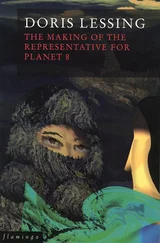Benjamin Bacon - The Making of the New Testament
Здесь есть возможность читать онлайн «Benjamin Bacon - The Making of the New Testament» — ознакомительный отрывок электронной книги совершенно бесплатно, а после прочтения отрывка купить полную версию. В некоторых случаях можно слушать аудио, скачать через торрент в формате fb2 и присутствует краткое содержание. ISBN: , Жанр: foreign_antique, foreign_prose, на английском языке. Описание произведения, (предисловие) а так же отзывы посетителей доступны на портале библиотеки ЛибКат.
- Название:The Making of the New Testament
- Автор:
- Жанр:
- Год:неизвестен
- ISBN:http://www.gutenberg.org/ebooks/39288
- Рейтинг книги:5 / 5. Голосов: 1
-
Избранное:Добавить в избранное
- Отзывы:
-
Ваша оценка:
- 100
- 1
- 2
- 3
- 4
- 5
The Making of the New Testament: краткое содержание, описание и аннотация
Предлагаем к чтению аннотацию, описание, краткое содержание или предисловие (зависит от того, что написал сам автор книги «The Making of the New Testament»). Если вы не нашли необходимую информацию о книге — напишите в комментариях, мы постараемся отыскать её.
The Making of the New Testament — читать онлайн ознакомительный отрывок
Ниже представлен текст книги, разбитый по страницам. Система сохранения места последней прочитанной страницы, позволяет с удобством читать онлайн бесплатно книгу «The Making of the New Testament», без необходимости каждый раз заново искать на чём Вы остановились. Поставьте закладку, и сможете в любой момент перейти на страницу, на которой закончили чтение.
Интервал:
Закладка:
In seeking the life behind the literature as the real revelation, the Johannine writer makes the essential distinction between Jewish and Christian doctrine. He stands between Paul, whose peculiar view was based on an exceptional personal experience, and the modern investigator, who can but treat all literary monuments and records of religious movements objectively, as data for the history and psychology of religion. If the student be devoutly minded the Scriptures will be to him, too, however conditioned by the idiosyncrasies of temporal environment and individual character, manifestations of "the life, even the eternal life, which was with the Father and was manifested unto us."
But the Johannine writer was far deeper and more 'spiritual' 3 3 The Fourth Gospel is thus characterized by Clement of Alexandria, meaning that it had a deep symbolic sense.
than the trend of his age. Ignatius' friend and contemporary, Polycarp, "the father of the Christians" of Asia, in his Epistle to the Philippians (110-117) urges avoidance of the false teachers who "pervert the sayings of the Lord to their own lusts, denying the (bodily) resurrection and judgment." But he has no better remedy than to "turn (probably in a somewhat mechanical way) to the tradition handed down from the beginning" and to study "the Epistles of Paul." The former process is in full application in Polycarp's later colleague, Papias of Hierapolis ( c. 145?), who publishes a little volume entitled Interpretation of the Sayings of the Lord . It is based on carefully authenticated traditions of the 'apostles and elders,' especially a certain contemporary "Elder John" who speaks for the Jerusalem succession. According to Papias our two Greek Gospels of Matthew and Mark represent two apostolic sources, the one an Aramaic compilation of the Precepts of Jesus by Matthew, the other anecdotes of his "sayings and doings" collated from the preaching of Peter.
Grateful as we must be for Papias' efforts to authenticate evangelic tradition, since they are corroborated in their main results by all other ancient tradition as well as by critical study of the documents, it is noticeable how they stand in line with the tendencies of the age. Eusebius (325) characterizes the reign of Trajan (98-117) as a period when many undertook to disseminate in writing "the divine Gospels." One of our own evangelists, whose work must probably be referred to the beginning of this period, but is not mentioned by 'the Elder,' alludes to the same phenomenon. The apostles were gone. Hence to Luke 4 4 See Footnote 3
the question of "order" was a perplexity, as the Elder observes that it had already been to Mark. Soon after Luke and Papias comes Basilides with his Exegetics , probably based on Luke (120?), and Marcion (140), both engaged from their own point of view with the current questions of Jesus' teaching and ministry.
Thus, at the beginning of the second century, the elements necessary to the formation of a New Testament canon were all at hand. They included the tradition of the teaching and work of Jesus, the letters of apostles and church leaders revered as given by authority of the Spirit and the visions and revelations of 'prophets.' Not only the elements were present, the irresistible pressure of the times was certain to force them into crystallization. The wonder is not that the canon should have been formed, but that it should have been delayed so long.
For there were also resistant factors. Phrygia, the scene of Paul's first great missionary conquests, the immemorial home of religious enthusiasm, became the seat, about the middle of the second century, of a movement of protest against the church policy of consolidation and standardization. Montanus arose to maintain the persistence in the church of the gift of prophecy, tracing the succession in both the male and female line back to Silas the companion of Paul and the prophesying daughters of Philip the Evangelist. The 'Phrygians,' as they were called, naturally made much of the writings current in Asia Minor, especially the book of 'prophecy' attributed to 'John.' Theoretically indeed the church was unwilling to acknowledge the disappearance of this gift. To Hermas (130-140) and the Teaching of the Twelve (120-130) it is still a "sin against the Spirit" to interrupt or oppose a prophet during his ecstatic utterance. On the other hand, the Teaching reiterates the apostolic warnings to "try the spirits," with prohibitions of specific excesses of the order. Moreover by the time of Montanus and the 'Phrygians' theoretical recognition of revelation through the prophets was rapidly giving way before the practical dangers inseparable from 'revelations' of this enthusiastic character, of which any member of the church, man or woman, ignorant or learned, lay or cleric, might be the recipient. The strict regulative control imposed by both Paul and John 5 5 See Footnote 3
upon this type of spiritual gift (1st Thess. v. 20 f .; 1st Cor. xii. 3; xv. 29 f. 32; cf. 1st John iv. 1) was found to be doubly necessary in face of the disintegrating tendencies of the post-apostolic age, and after long debate and much protest the movement of Montanus was at last decreed heretical at Rome, though Irenæus (186) interceded for it, and Tertullian (210) became a convert.
The history of this movement in the formative period of the New Testament canon explains why the "revelations of the prophets" obtained but scant recognition as compared with the "word of the Lord" and the "commandment of the apostles." Last of the three, in order of rank (1st Cor. xii. 28; Eph. iv. 11), last also to be codified in written form, we need not be surprised that our present New Testament retains but a single one of the once current books of 'prophecy.' For a time the Shepherd of Hermas and the Apocalypse of Peter rivalled the claims to canonicity of our own Revelation of John, but were soon dropped. Our own Apocalypse has suffered more opposition than any other New Testament writing, being still excluded from the canon in some branches of the church. Its precarious place at the end of the canon which we moderns have inherited from Athanasius ( ob. 373) was due, in fact, far less to its author's vigorous assertions of authority as an inspired "prophet" (i. 1-3; xxii. 6-9, 18 f. ) than to the claims to apostolicity put forward in the preface and appendix. For until the third century no one drammed of understanding the "John" of Rev. i. 4, 9 and xxii. 8 otherwise than as the Apostle. Eusebius accordingly (325) is uncertain only as to whether the book should be classed in his first group of "accepted" writings, along with the Gospels and Pauline Epistles, or in the third as "spurious." If written by "some other John than the Apostle" he would not even honour it with a place in his second group of "disputed" books, along with Hebrews, James, Jude, and 2nd Peter.
Thus at the end of the second century, while there was still much dispute (destined indeed to continue for centuries) as to the limits of the New Testament canon, there had in fact come to be a real canonical New Testament set over against the Old, as of equal, or even greater authority. The "word of the Lord," the "commandment of the apostles," and at last even the "revelations of the prophets," had successively ceased as living realities, and become crystallized into written form. They had been codified and canonized. The church had travelled the beaten track of the synagogue, and all the more rapidly from the example set before it. None of the early canons ( i. e. lists of writings permitted to be read in the churches) coincides exactly, it is true, with the New Testament current among ourselves. The list of Athanasius is the first to give just our books. The Roman list of the Muratorian fragment (185-200) omits Hebrews, James and 2nd Peter, and gives at least a partial sanction to the Apocalypse of Peter . The lists of Origen ( ob . 251) and Eusebius (325) vary as respects both inclusion and exclusion. All early authorities express a doubtful judgment regarding the outer fringe of minor writings such as James, Jude, 2nd Peter, 2nd and 3rd John. Even those of larger content, such as Hebrews and Revelation, if their apostolicity was questioned, remained subjects of dispute. But already by a. d. 200 the time had long since passed when any of the thirteen epistles bearing the name of Paul could be deemed open to question. Marcion's exclusion of the three Pastorals had been forgotten. Dispute of the four-gospel canon could still be tolerated; but not for long. Irenæus (186) has no patience with "those wretched men" who cannot see that in the nature of the case there should be neither more nor less than this number. But he explicitly refers to those who disputed "that aspect of the gospel which is called John's." There were, in fact, opponents of Montanism at Rome, who under the lead of Gaius had denied the authenticity of all the writings attributed to John, including the Gospel itself. But even those of the orthodox who were willing enough to reject Revelation, with its now unfashionable eschatology, agreed that Gaius' attack upon the fourth Gospel was too radical. The small body who continued for a few generations to resist the inclusion of any of the Johannine writings in the canon remained without influence, and were ultimately forgotten. The 'catholic' 6 6 Catholic is here used in its etymological sense of "general" or universal. We shall have occasion to apply the term in a more limited sense hereafter.
church had repudiated heresy, standardized the faith, and confined its recognized historic expression to a 'canon' of New Testament Scripture.
Интервал:
Закладка:
Похожие книги на «The Making of the New Testament»
Представляем Вашему вниманию похожие книги на «The Making of the New Testament» списком для выбора. Мы отобрали схожую по названию и смыслу литературу в надежде предоставить читателям больше вариантов отыскать новые, интересные, ещё непрочитанные произведения.
Обсуждение, отзывы о книге «The Making of the New Testament» и просто собственные мнения читателей. Оставьте ваши комментарии, напишите, что Вы думаете о произведении, его смысле или главных героях. Укажите что конкретно понравилось, а что нет, и почему Вы так считаете.












